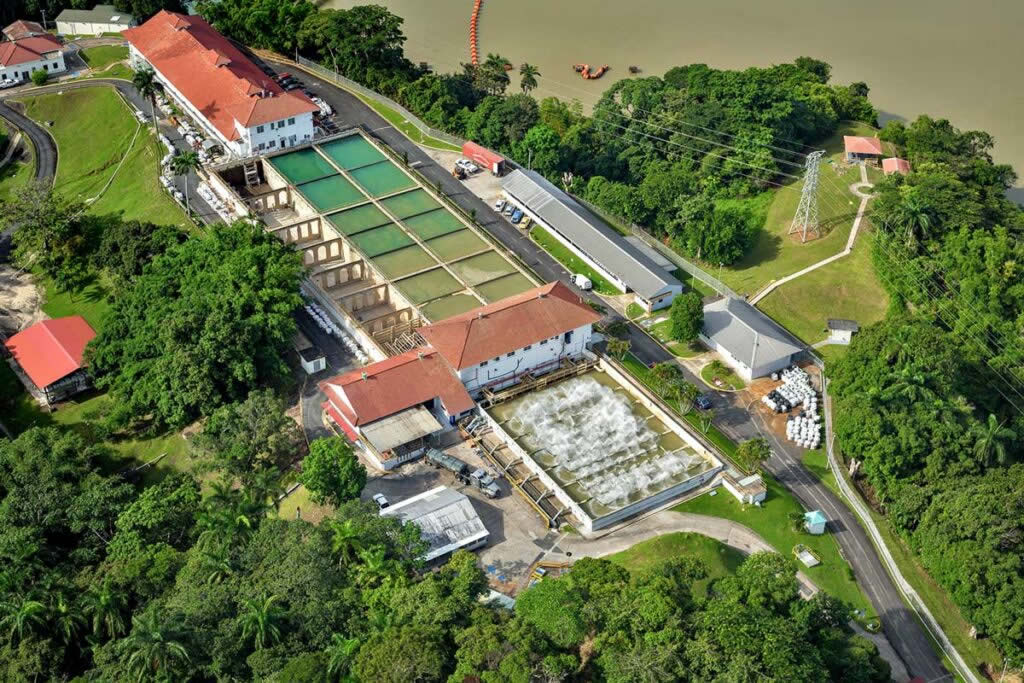As he walks through each work station of the filter room at the Miraflores water treatment plant, operator Agripino Aguilar seems to say goodbye to those who, for years, have been his companions in countless work days.
New technologies are making room in these facilities, after the existing ones have reached the end of their useful life.
In each of these stations, a series of knobs and measuring clocks from which the final filtering of the drinking water treatment process is controlled, are being replaced by a digital monitor that will have the same function, but controlling the new valves that are also placed meters downstream. In other words, the system will change from a mechanical hydraulic system to a digital one.
These changes are being made without stopping water treatment, so Agripino and the other operators combine their workday between the traditional operation and the implementation of the new technology. While this is happening, the old controls and valves dating from 1914, when the plant was built, are gradually being taken out of operation.
The new Miraflores water treatment plant
With an investment of more than four million dollars, the Panama Canal is seeking to optimize the operation of this century-old plant, which since 1915 has fulfilled its mission of producing potable water to supply the Canal facilities. At present, the plant provides service to some 200,000 inhabitants of the Panamanian capital.
Carlos Della Togna, the Canal’s Water Production Manager, described the project as “a quantum transition from the processes and technology available in 1914 to what exists today“. He added that this change represents a remarkable advance, which translates into greater reliability of the operation.
The initiative consists of replacing 142 valves in the filtration system, which will be changed from hydraulic to motorized with electric actuators. In addition, the carbon and fluoride dosing areas will be upgraded with the replacement of four pieces of equipment.
“The youngest part of Miraflores, structurally speaking, dates back to 1942,” says Luz de Meneses, plant supervisor, as she walks through the piping gallery where the green and blue colors mark the difference between what dates back to 1914 and what is being installed. This renovation aims to produce 57 million gallons per day, one million more than the current figure.
A century-old time-tested work
In March 1915, the plant began operations, supplying all of Panama City at that time, until 1974, when the construction of the Federico Guardia Conte de Chilibre water treatment plant was completed. Today, this is the largest plant in the country; however, Miraflores did not leave the system and continued supplying water to homes in El Chorrillo, San Felipe, Santa Ana, Marañón and Calidonia.
It has been 106 years since Panama made history by starting up one of the first water treatment plants in Latin America. “Since then, the service has been uninterrupted, even under the worst conditions in terms of raw water quality,” says Meneses, whose years of experience generate a pride that is evident in his speech.
One of the most complicated moments, he recalls, was during the La Purísima storm (2010), which caused hundreds of landslides, with the consequent increase in turbidity in the lakes. At that time, the operation was stopped for only 16 hours. Quite a record, considering that the reports of the time detail that the sectors of the city that were not supplied by this plant did not have drinking water for about 40 days.
Maintaining optimum operation for such a long time is an internal process, complicated and at the same time dynamic, says Meneses, who recalls that she began her professional career in this place and that it had an immediate impact on her, because it works like clockwork, despite the fact that everything dates back to 1915.
The key to success
In the control room, in front of a row of screens and communication systems, Pedro Araúz, another of the operators at Miraflores, monitors and acts on each of the processes that take place in the plant, from the water intakes to when the liquid is ready to be distributed. This is a sign that technology is present in the daily dynamics, even though the facilities are more than 100 years old.
From this control post, the necessary coordination with the National Aqueduct and Sewerage Institute (IDAAN) is also attended, and alerts are issued to attend any eventuality that requires the participation of Panama Canal support personnel.
Over time, the processes were simplified and modernized, which was strengthened when the Supervisory Control and Data Acquisition system, known as SCADA, was implemented at the end of the 1970’s.
This is a tool that facilitates the development of software for computers used in the remote control and supervision of industrial processes.
In this, as in other environments around the world, and especially now in times of pandemic, technology advances relentlessly. The Canal and its people fully understand the change and, therefore, both Meneses and Della Togna agree that parallel to these adjustments, the men and women who operate the plant are the most valuable resource of this organization.
